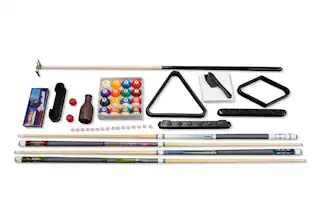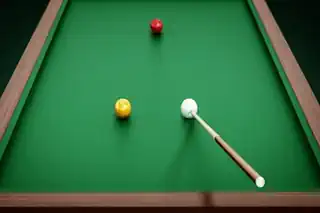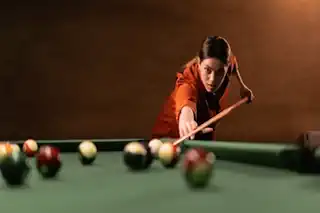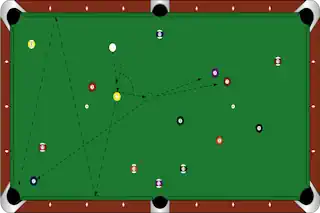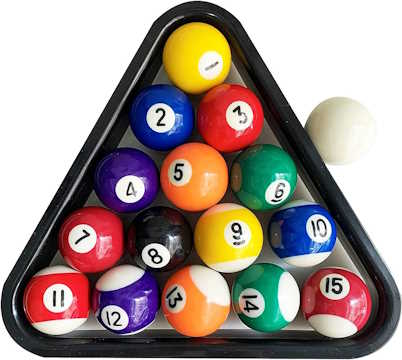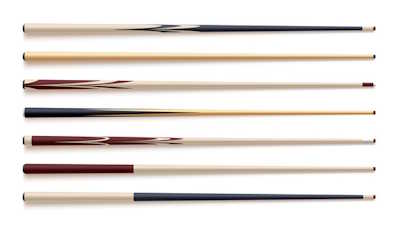A Beginners Guide to Billiard Table Surfaces: Choosing the Right One for Your Game Room
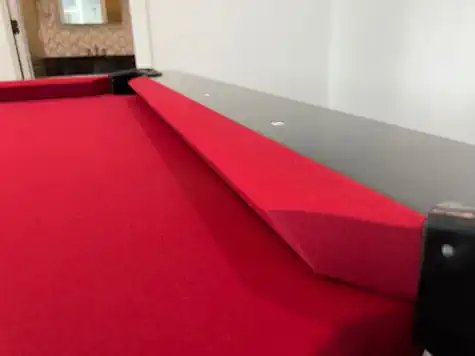
Introduction to Billiard Table Surfaces: The Importance of Choosing the Right One
Whether you’re an avid billiard player, a game room owner, or a shopper looking for the perfect pool table, understanding billiard table surfaces is crucial. The playing surface significantly impacts gameplay, affecting everything from ball speed to bounce consistency. In this guide, we’ll walk through the different types of billiard table surfaces, the factors to consider when choosing one, and how to maintain it for optimal performance.
Types of Pool Table Surfaces: Cloth, Slate, and Their Variants
Cloth Surfaces
The most common material for the playing surface is cloth, typically made from a blend of wool and nylon. The quality of the cloth can vary:
Woolen Cloth: Often found in recreational tables, this type offers a slower ball speed.
Worsted Wool Cloth: Used in professional settings, this high-quality cloth provides a smoother and faster playing surface.
Slate Surfaces
Slate is another critical component of high-quality billiard tables:
Single-Slate Tables: These are usually higher-end tables where the slate is a single piece, providing a perfectly even playing surface.
Three-Piece Slate Tables: These tables use three pieces of slate, making them easier to transport and install without sacrificing quality.
Variants
Beyond these materials, there are also:
Synthetic Slates: Cost-effective but less stable than natural slate.
Non-Slate Surfaces: Often used in lower-end tables, these surfaces can affect the ball’s roll and gameplay consistency.
Types of Bumper Materials: Enhancing Your Game Experience
Another crucial aspect of a billiard table is the bumpers, or cushions, that line the perimeter of the playing surface. These components play a vital role in maintaining a consistent and enjoyable game experience, as they directly influence the ball’s rebound and speed. Here’s a closer look at the different types of bumper materials and their impact on billiards tables and gameplay:
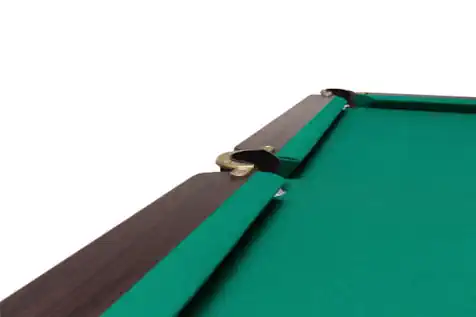
Natural Rubber: The most traditional material for bumpers, natural rubber offers a responsive and consistent bounce, making it a favorite among professionals. This material tends to last longer and provides a predictable rebound, which is essential for strategic gameplay.
Synthetic Rubber: Often used in mid-range to lower-end tables, synthetic rubber can be more affordable but might not offer the same consistency as natural rubber. Players might notice variations in bounce, which can affect game precision.
Canvas-Backed Rubber: This type of bumper material combines rubber with a canvas backing for added durability. It offers a steady rebound and is typically found in higher-end tables, providing a professional level of play.
By understanding the various types of bumper materials and their effects on gameplay, you can make a more informed decision when selecting a billiard table. Whether you seek the consistency of natural rubber or the affordability of synthetic options, the right bumpers can significantly enhance your overall billiards playing experience.
Factors to Consider When Selecting a Billiard Table Surface: Durability, Playability, and Maintenance
Durability
When investing in a billiard table, durability is key. High-quality woolen or worsted cloth, coupled with a natural slate surface, generally a quality pool table lasts longer and withstands rigorous play.
Playability
Playability involves how well the table supports a consistent, enjoyable game. Worsted wood, wool cloth and single-slate surfaces usually offer the best playing experience, providing smooth, fast, and predictable gameplay.
Maintenance
Maintenance is essential for prolonging the life and performance of your table:
Cloth: Regular brushing and occasional re-clothing.
Slate: Ensuring the slate remains level, with professional servicing as needed.
How to Color Your Billiard Tables: How It Affects Play and Aesthetics
Selecting the right color for your billiard table cloth is not just about aesthetics— it can also influence your gameplay and overall ambiance of your game room. Here’s what you need to know about the impact of color:
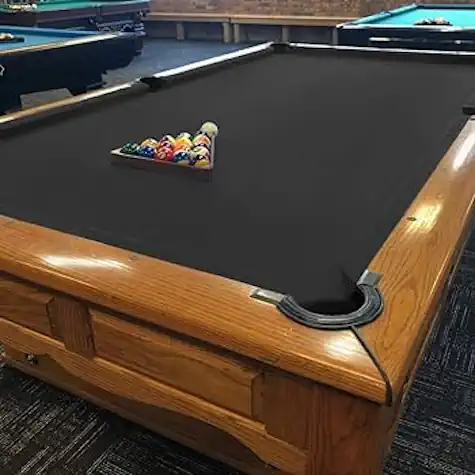
Popular Cloth Colors
Green: The traditional color for billiard tables, green is easy on the eyes and provides a classic look. It’s said to reduce eye strain, allowing players to focus better during extended gaming sessions.
Blue: Often found in professional tournaments, blue has become increasingly popular. It offers a modern feel and provides good contrast with the colored balls, making them easier to see.
Red: A vibrant and bold choice, red can add an exciting flair to your game room. However, it might be slightly more straining on the eyes over long periods.
Black: Sleek and stylish, black cloth gives a contemporary and luxurious appearance. This color can make the balls stand out, though some players find it affects depth perception.
Custom Colors: Some tables offer customized cloth colors, allowing you to match your game room’s decor or express your personal style. Whether it’s purple, grey, or any other hue, custom colors can make your table truly unique.
Factors to Consider
When choosing the color of your billiard tablecloth, consider the following factors:
Lighting: Ensure your game room has adequate lighting to complement the cloth color you choose. Colors like green and blue perform well under various lighting conditions, while darker shades like black might require more illumination.
Room Decor: The color of the cloth should harmonize with the rest of your game room. A well-coordinated room creates a more inviting atmosphere.
Visibility: The primary function of the cloth is to facilitate the game, so choose a color that ensures clear visibility of the balls and markings.
Adding color to your billiard table is a fantastic way to personalize your gaming space while also considering the practical aspects of play. Whether you stick to tradition or opt for something bold and unique, the right color of billiards table can enhance both your playing experience and the look of your room.
Maintaining Your Billiard Table Surface: Best Practices and Tips
Cleaning the Cloth
Brush Regularly: Use a specialized brush to remove chalk and debris.
Vacuum Occasionally: Low suction can help without damaging the cloth.
Avoid Spills: Clean any spills immediately to prevent staining.
Caring for the Slate
Level the Table: Make sure the table remains perfectly level by adjusting the legs or frame as needed.
Protect the Surface: Use a table cover when not in use to protect against dust and damage.
The Impact of Table Surfaces on Gameplay and Skill Development
The type of surface you choose can significantly impact your gameplay and skill development:
Speed and Control: Different cloth materials can affect ball speed and control, influencing your ability to develop precise shots.
Consistency: A high-quality surface ensures consistent performance, which is crucial for improving skills over time.
Latest Innovations in Billiard Table Surfaces: Advancements in Materials and Design
Innovation in billiard table surfaces is ongoing, with new materials and designs constantly emerging:
Hybrid Fabrics: Combining traditional materials with modern synthetics for enhanced durability and performance.
Advanced Slate Technologies: Improved methods for producing slate that offer better consistency and longevity.
Conclusion: Choosing the Ideal Billiard Table Surface for Your Needs
Ultimately, the ideal billiard table surface depends on your specific needs and preferences. Whether you prioritize durability, playability, or ease of maintenance, it’s essential to consider all factors to make an informed decision that enhances your billiard experience.
Frequently Asked Questions (FAQ)
How often should I replace the cloth on my billiard table?
Replacing the cloth on your billiard table depends on how frequently you use it and how well you maintain it. For most home pocket billiard tables, with regular use, re-clothing every 3 to 5 years is recommended. If your table sees heavy, daily use, more frequent replacement may be necessary to maintain optimal playability.
What is the best way to clean and maintain the pool tables cloth?
To keep perfectly flat surface of the cloth in top condition, brush it regularly with a specialized billiard table brush to remove chalk and debris. Occasionally, you can vacuum the cloth using low suction to pick up finer particles. Be sure to clean any spills immediately to prevent stains. Using a table cover when the table is not in use will also help protect the cloth from dust and damage.
How can I ensure my billiard table stays level?
A level billiard table is crucial for fair and consistent gameplay. Check the table regularly with a carpenter’s level and adjust the legs or frame as needed. If you’re uncertain about doing this yourself, consider hiring a professional to ensure precision.
Can I choose any cloth color for my billiard table?
Yes, many manufacturers offer a variety of cloth colors, and some even provide custom color options. While traditional colors like green and blue are popular for their visibility and classic look, you can select any color that fits your personal style and room decor. Just be sure to consider the lighting and visibility in your game room when making your choice.
Is a single-slate surface better than a multiple-piece slate surface?
Single-slate surfaces are generally preferred by casual players for their seamless design, which offers a consistent playing surface and is easier to level. However, high-quality multiple-piece slate surfaces can also provide excellent playability if they are well-installed and properly maintained. Single-slate surfaces tend to be heavier and more challenging to move, while multiple-piece slates are easier to handle during transport and installation.
What is the difference between woolen and worsted cloth?
Woolen cloth is thick and napped, giving it a slightly textured surface that can slow down ball speed. Worsted cloth, on the other hand, is tightly woven and smooth, offering a faster playing surface with more predictable ball behavior. Worsted cloth is commonly used in professional settings due to its superior performance and durability.
How can I protect the slate on my billiard table?
To protect the top slate table, always cover your table when it’s not in use to keep dust and moisture at bay. Make sure the table remains level by adjusting the legs or frame as needed. If your table requires significant adjustments or you notice uneven play, consider having it serviced by a professional.
Why is durability important when selecting a billiard table surface?
Durability is essential because a high-quality, durable surface will withstand the rigors of play and maintain its performance over time. Investing in durable materials like worsted wool and natural slate ensures that the table remains in excellent condition for many years, providing a solid and consistently enjoyable playing experience.
